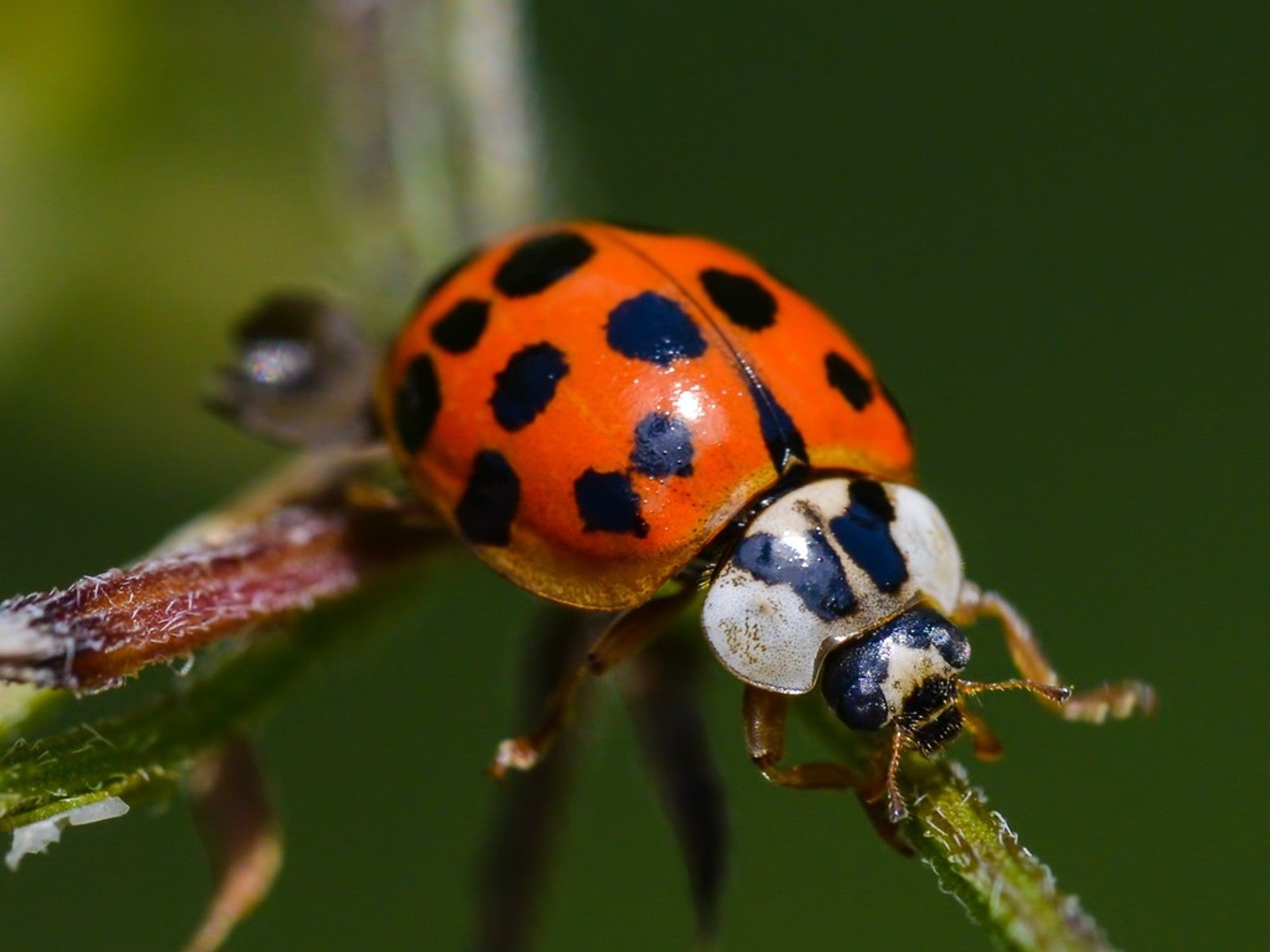Identifying Ladybugs – Asian Vs. Native Lady Beetles


There are approximately 5,000 species of lady beetles worldwide. While most species are considered beneficial, the Asian lady beetle has earned a reputation as a nuisance bug. This non-native species invade homes and businesses in large swarms from September through November.
Identifying ladybugs and understanding the behavioral differences between lady beetles can help gardeners control unwanted populations of Asian lady beetles.
Asian Lady Beetle Characteristics
The harlequin or multicolored Asian lady beetle (Harmonia axyridis) has its origins in Asia, but these bugs are now found worldwide. Like other species of ladybugs, the Asian lady beetle feeds upon aphids and other garden pests. When comparing Asian vs. native lady beetle behavior, the major difference is native ladybugs overwinter outdoors.
While it's easy to think Asian lady beetles come inside to escape the cold, studies have shown they are attracted to contrasting vertical stripes similar to the markings seen on rock cliffs. This pattern on homes and buildings draws the nuisance bugs when searching for a suitable spot for hibernation.
Not only is an indoor swarm of ladybugs a nuisance, but the Asian beetle's defense mechanism is the release of a foul-smelling fluid that stains floors, walls, and furniture. Swatting or stepping on them activates this response.
Lady beetles can also bite, with the Asian bug being a more aggressive species. Although ladybug bites don't penetrate the skin, they can elicit an allergic reaction. Hives, coughing, or conjunctivitis from touching the eyes with contaminated hands are common symptoms.
Identifying Asian Lady Beetles
In addition to being an indoor nuisance, Asian lady beetles also compete with native ladybug species for life-supporting resources. Learning the visual differences between the two types makes identifying ladybugs much easier. When comparing Asian vs. native lady beetle species, here's what to look for:
Gardening tips, videos, info and more delivered right to your inbox!
Sign up for the Gardening Know How newsletter today and receive a free copy of our e-book "How to Grow Delicious Tomatoes".
- Size: The Asian lady beetle averages ¼ inch (6 mm.) in length and tends to be slightly longer than native species.
- Color: Many native species of ladybugs sport a red or orange wing cover. Asian lady beetles are found in a variety of colors including red, orange, and yellow.
- Spots: The number of spots on Asian lady beetles can vary depending upon species. The most common native species have seven spots.
- Distinctive Markings: The best way to distinguish Asian lady beetles from other species is by the shape of the black markings on the bug's pronotum (this is the thorax covering located behind the beetle’s head). The Asian lady beetle has a white pronotum with four black spots that resemble an “M” or “W” depending on whether the bug is being viewed from the front or rear. Native species of ladybugs have a black head and thorax with small, white dots on the sides.
Learning the differences between lady beetles can help gardeners encourage native species and prevent Asian species from invading their homes.

Laura Miller has been gardening all her life. Holding a degree in Biology, Nutrition, and Agriculture, Laura's area of expertise is vegetables, herbs, and all things edible. She lives in Ohio.